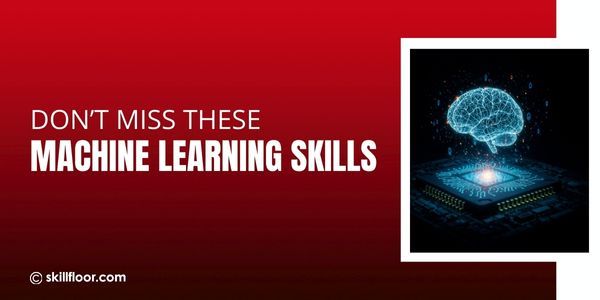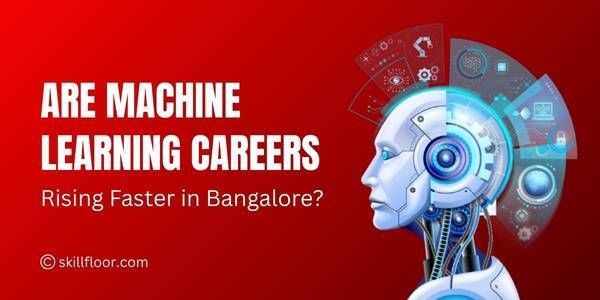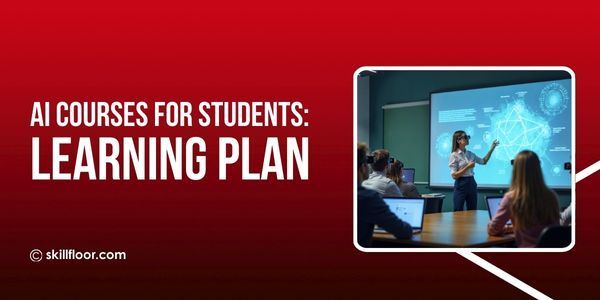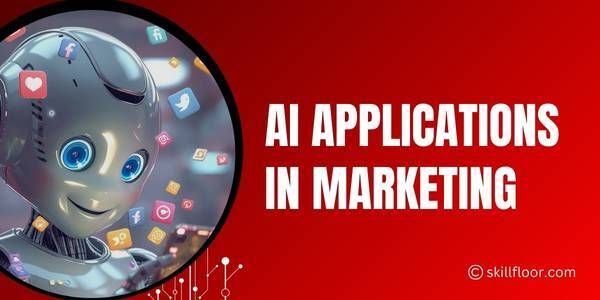Generative AI Interview Questions and Answers
Explore detailed Generative AI interview questions and answers. Learn concepts, models, applications, and ethics to prepare for AI job interviews in 2025.

Generative AI has quickly moved from research labs into mainstream industries, transforming the way we work, create, and innovate. From generating human-like text with Large Language Models (LLMs) to creating images, music, and even videos, generative models are redefining what machines can do. According to a McKinsey 2024 report, generative AI could add up to $4.4 trillion annually to the global economy, with applications spanning healthcare, finance, education, entertainment, and beyond.
With this rapid adoption, the demand for generative AI experts has skyrocketed. Companies are hiring specialists who can design, implement, and govern these powerful models. Whether you’re preparing for a technical role (like ML Engineer, AI Researcher, or Data Scientist) or a strategic role (like AI Consultant or Product Manager), understanding core generative AI interview questions is key.
Fundamentals of Generative AI
Q1. What is Generative AI, and how is it different from traditional AI?
Generative AI refers to systems capable of creating new data outputs—such as text, images, audio, or video—by learning underlying patterns from training datasets. Unlike traditional AI, which is largely focused on discriminative tasks like classification or regression (e.g., spam detection, image recognition), generative AI is focused on creative or synthetic tasks. For example:
-
Traditional AI: Classifying an email as spam or not.
-
Generative AI: Writing an entire marketing email from scratch.
This difference lies in learning the joint probability distribution (P(X, Y)), allowing generative models to produce new examples resembling the training set, whereas traditional models focus on conditional probability P(Y|X) to predict outcomes.
2. What are some common applications of Generative AI?
Generative AI is widely applied across industries:
-
Content Creation: Blog posts, articles, social media content.
-
Image & Video Generation: Tools like DALL·E, MidJourney, and Stable Diffusion create photorealistic visuals.
-
Healthcare: Drug discovery, protein folding, medical imaging analysis.
-
Finance: Fraud detection, automated report generation, scenario simulations.
-
Education: Personalized tutoring, curriculum generation, grading assistance.
-
Customer Support: Conversational chatbots and virtual assistants.
These applications highlight both productivity gains and cost efficiencies.
3. What are the key differences between discriminative and generative models?
-
Discriminative Models: Learn the boundary between classes (e.g., logistic regression, support vector machines). They optimize P(Y|X).
-
Generative Models: Learn the underlying distribution of the data (e.g., GANs, VAEs, diffusion models). They optimize P(X, Y), enabling them to generate new data points.
Example: A discriminative model can classify whether an image contains a cat, while a generative model can create entirely new images of cats.
4. What challenges does Generative AI face today?
-
Hallucinations: Producing factually incorrect but realistic-looking content.
-
Bias: Reinforcing stereotypes or harmful outputs due to biased training data.
-
Copyright & Ethics: Generated works may infringe intellectual property.
-
High Compute Costs: Training large models requires massive resources.
-
Explainability: Understanding why models generate certain outputs is difficult.
Generative AI Models and Architectures
5. What is a GAN, and how does it work?
A Generative Adversarial Network (GAN) consists of two neural networks trained simultaneously:
-
Generator: Produces synthetic samples from random noise.
-
Discriminator: Evaluates whether samples are real (from the dataset) or fake (from the generator).
The generator improves by trying to fool the discriminator, while the discriminator improves by distinguishing real vs. fake. This adversarial training produces highly realistic outputs.
6. What is a Variational Autoencoder (VAE)?
A VAE is a type of generative model that learns latent representations of data. It consists of:
-
Encoder: Compresses input data into a latent space.
-
Decoder: Reconstructs data from this latent space.
Unlike traditional autoencoders, VAEs introduce randomness via probability distributions, enabling them to generate new, diverse samples rather than just reconstructing existing inputs.
7. What are Diffusion Models, and why are they important?
Diffusion models generate data by progressively denoising a random noise distribution to form structured data. Tools like Stable Diffusion and Imagen use this technique. Compared to GANs, diffusion models:
-
Are more stable during training.
-
Produce high-quality, diverse outputs.
-
Scale effectively for image and video generation tasks.
8. Explain the concept of Transformer models in Generative AI.
Transformers introduced the attention mechanism, allowing models to weigh different parts of an input sequence when generating output. Key features:
-
Parallelization over long sequences.
-
Scalability with massive datasets.
-
State-of-the-art performance in NLP and multimodal tasks.
Models like GPT, BERT, and T5 are built on transformer architectures, revolutionizing text generation.
9. What is prompt engineering, and why is it important?
Prompt engineering is the practice of designing effective inputs (prompts) to guide Generative AI models toward desired outputs. Since generative models are highly sensitive to input phrasing, prompt engineering improves accuracy, creativity, and efficiency. Example: Instead of “Write about cars,” asking “Write a 200-word blog on the future of electric cars in India” yields better results.
Advanced Concepts in Generative AI
10. What is RLHF (Reinforcement Learning with Human Feedback)?
RLHF is a training method where human preferences are incorporated into model fine-tuning. It involves:
-
Training a base model on large datasets.
-
Using human evaluators to rate outputs.
-
Training a reward model based on feedback.
-
Fine-tuning the AI using reinforcement learning to align with human values.
This is used in models like ChatGPT to reduce harmful or irrelevant responses.
Q11. What are hallucinations in Generative AI, and how can they be reduced?
Hallucinations occur when an AI confidently generates incorrect or fabricated content. For example, citing a non-existent research paper. They can be reduced by:
-
Using retrieval-augmented generation (RAG).
-
Regular fine-tuning with verified datasets.
-
Incorporating human-in-the-loop checks.
-
Applying fact-checking algorithms.
12. What is Explainable AI (XAI), and why is it important in generative systems?
XAI refers to methods that make AI models interpretable and transparent. In generative systems, it’s crucial for:
-
Building trust with users.
-
Identifying biases in outputs.
-
Meeting compliance requirements (GDPR, AI Act).
For example, showing why a chatbot generated a certain response based on its context.
13. Compare GANs vs. Diffusion Models.
-
GANs: Fast training, but unstable and prone to mode collapse (generator produces limited diversity).
-
Diffusion Models: Slower, but produce more diverse, stable, and higher-quality outputs.
Both are useful depending on applications (GANs for face generation, diffusion for art or high-resolution images).
14. What are zero-shot and few-shot learning in LLMs?
-
Zero-Shot Learning: Model performs tasks it has never explicitly trained for, based on general knowledge.
-
Few-Shot Learning: Model adapts to new tasks with only a few labeled examples.
Example: Asking GPT to summarize a paragraph in zero-shot mode vs. showing it 2–3 summaries first (few-shot).
Applications and Use Cases
15. How is Generative AI applied in healthcare?
-
Designing new drugs by simulating molecular structures.
-
Predicting protein folding (AlphaFold).
-
Generating synthetic medical datasets to train AI without risking privacy.
-
Personalizing treatment recommendations.
16. How does Generative AI help in marketing?
-
Automating ad copy creation.
-
Personalizing email campaigns.
-
Generating product images or videos.
-
Building customer personas from data insights.
-
Running simulations of campaign effectiveness.
17. Explain the role of Generative AI in cybersecurity?
-
Generating synthetic attack scenarios to test defenses.
-
Detecting anomalies in real-time by learning normal data distributions.
-
Automating phishing detection and prevention.
18. What are digital twins in Generative AI?
Digital twins are AI-powered virtual replicas of physical systems. Generative AI enhances them by simulating future scenarios—e.g., predicting machine failure in manufacturing or modeling patient responses in healthcare.
Ethics, Risks, and Governance
19. What are the risks of bias in Generative AI?
Generative AI models trained on biased data may reinforce stereotypes, discriminate against groups, or produce offensive content. Bias risks arise from under-represented datasets, cultural imbalances, and algorithmic reinforcement.
20. What regulations affect Generative AI development?
-
EU AI Act (2024): Categorizes AI applications by risk level.
-
GDPR: Data protection and user consent requirements.
-
US AI Bill of Rights (draft): Emphasizes fairness and transparency.
These frameworks guide ethical deployment.
21. What is data poisoning in Generative AI?
Data poisoning is when malicious actors intentionally insert corrupted or biased data into training datasets, causing models to produce harmful or manipulated outputs.
22. How do companies mitigate ethical risks in Generative AI?
-
Bias audits and dataset transparency.
-
Human-in-the-loop oversight.
-
Restricting access to high-risk features (e.g., deepfakes).
-
Embedding watermarking and traceability in generated content.
Career-Focused Questions
23. What skills are required to work in Generative AI?
-
Programming: Python, TensorFlow, PyTorch.
-
Mathematics: Linear algebra, probability, optimization.
-
ML/DL knowledge: CNNs, RNNs, transformers.
-
Domain knowledge (healthcare, finance, etc.).
-
Ethics and compliance awareness.
24. What industries are hiring Generative AI professionals?
-
Tech and IT.
-
Healthcare and pharmaceuticals.
-
Finance and banking.
-
Media, entertainment, and gaming.
-
E-commerce and retail.
25. How can a beginner start learning Generative AI?
-
Start with ML basics: regression, classification.
-
Learn deep learning frameworks.
-
Explore models like GANs, VAEs.
-
Experiment with open-source projects (Hugging Face, TensorFlow Hub).
-
Build small projects like text generation or image synthesis.
Advanced Interview Preparation
26. How do generative models handle multimodal data?
Multimodal models combine multiple data types (e.g., text + image) to generate richer outputs. Example: OpenAI’s CLIP and Google’s Imagen. They align embeddings across modalities to generate contextual outputs.
27. Explain Retrieval-Augmented Generation (RAG).
RAG combines LLMs with external knowledge sources. Instead of relying only on trained data, the model retrieves relevant documents from a database and generates contextually accurate answers. This reduces hallucinations.
28. What is the role of embeddings in Generative AI?
Embeddings convert words, images, or data into numerical vectors that capture meaning and context. They allow generative models to understand relationships between data points and generate coherent outputs.
29. How do you evaluate the performance of a Generative AI model?
-
Text: BLEU, ROUGE, Perplexity, Human evaluation.
-
Images: Inception Score (IS), Fréchet Inception Distance (FID).
-
General: Diversity, coherence, relevance, factual accuracy.
30. What is the future of Generative AI?
Generative AI will evolve toward:
-
Multimodal models that integrate text, image, video, and audio seamlessly.
-
Explainable and ethical AI for transparency.
-
AI copilots are embedded across industries.
-
Edge AI for faster, private generation on devices.
Generative AI is no longer just an emerging technology—it’s reshaping industries, workflows, and creative possibilities worldwide. From natural language generation to image synthesis and multimodal applications, its influence is growing rapidly. Preparing for interviews in this field requires not only technical expertise but also an understanding of real-world use cases, risks, and ethical implications. The interview questions and answers shared in this guide cover foundational concepts, advanced techniques, and industry applications, equipping you to stand out in a competitive job market. Whether you’re aspiring to be a researcher, engineer, or AI consultant, mastering these topics will help you confidently demonstrate your knowledge and align with the future of AI innovation.




























































